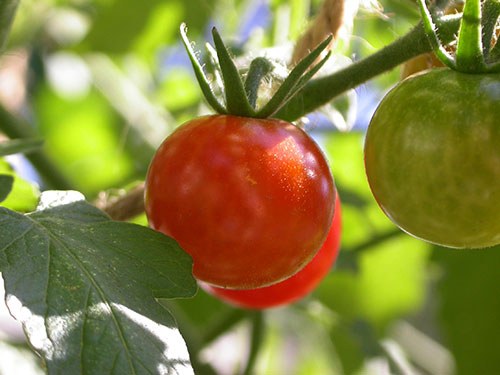You will need
- - boxes;
- - potassium permanganate;
- - salt;
- seeds;
- - micronutrient;
- manure humus;
- loam;
- - peat;
- - superphosphate;
- - nitroammophos;
- - magnesium;
- - ash;
- film;
- - thick wire;
- - chicken manure.
Instruction
1
The first step is to choose the variety of tomato, the fruits of which are large. There are lots of them, so consult the store where an experienced salesperson will help you choose the right variety. Before buying seeds, carefully read the instructions for planting and growing this type of tomato. Healthy and quality seedlings will help to obtain large fruit in the early stages.
2
At the end of January we will start preparing the seeds. For a start, they should be heated at a temperature of 50-60 degrees. Then place them in a container with a pre-prepared solution of sodium chloride 3% and mix thoroughly. Use for planting only those seeds which have settled to the bottom, surfaced, the seeds can be disposed of, they are empty. Soak suitable tomato seeds in a weak solution of permanganate of potassium twenty minutes.
3
Rinse seeds and let dry for one hour at room temperature. Dissolve in two and a half liters of water a quarter pill of micronutrients and again soak the seeds for twelve hours. Then for twelve days is hardened. To do this, keep the seeds for twelve hours at room temperature, when temperature 1-2 degrees. Now you can start to sowing in boxes.
4
The soil mixture should consist of manure humus, sod land and lowland peat (all in equal proportions – by the bucket). Fill the following mixture of fertilizers: 200 grams of double superphosphate, 100 grams of nitroammophos, 100 grams kalimagnesia and 1.5 liters of ash remaining after burning of foliage of tomatoes. Fill the boxes with the prepared composition and make a shallow hole (the layer of earth should not exceed 6 inches, otherwise it may sour), in which lay the seeds, sprinkle with soil and lightly moisten. Cover the boxes with cling film and put in a warm place, the temperature should be 25-28 degrees. Watering crops in the morning and evening.
5
Times in twelve days watering the seedlings with a weak solution of potassium permanganate. When the seedlings show four good leaves, transplant them into paper containers, the amount of which should be 10x12 inches.
6
At the end of April we will start planting seedlings in open ground. Prepare the soil: loosen the iron rake and cover with black tape. On the eve of these actions make the land mineral fertilizers: 20 grams of ammonium sulfate, 30 grams of nitroammophos, 20 grams of potassium sulfate and 20 grams kalimagnesia (one square meter). Dig site.
7
The bed should consist of four rows, aisle width – two feet. Dig holes with a depth of thirty centimeters and make a mixture of chicken manure (a pint of litter to two liters of water). Planted seedlings with a lump of earth, so as not to damage the roots. Then water the plant and put the arc of thick wire at intervals of 50-60 cm.
8
If in the flowering period starts the rains – cover patch with foil, pulling it on arc. Each plant form a single stem with three buds, and remove superfluous shoots, until the harvest at the last inflorescence. Then the chasing – cut tops. Three weeks before fruit ripening produce root fertilizing, the predominance in the land of potassium and phosphorus will accelerate the ripening of fruits. Water the tomatoes with plenty of water once in four days, this will be enough for good growth. Use settled water, but in any case not cold. Soon you will enjoy the size and quantity of the harvested crop.


